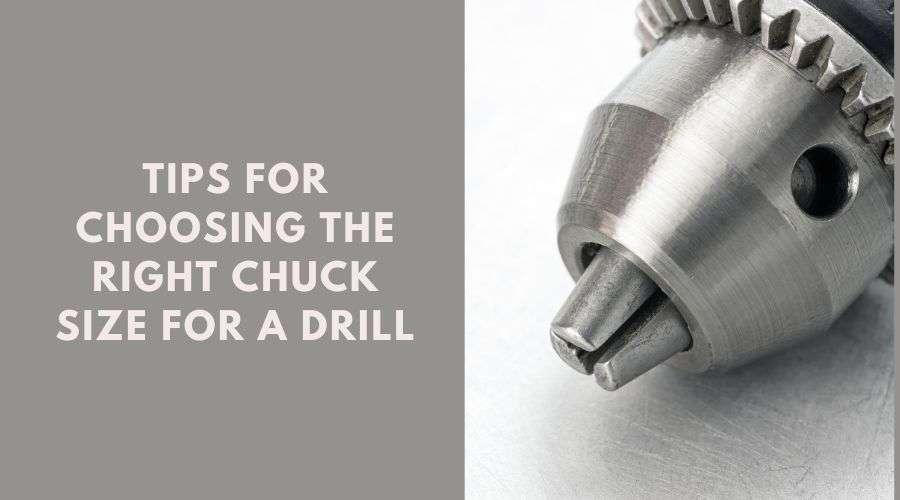
Choosing the right chuck size for a drill is a crucial decision that can significantly impact the performance and versatility of your power tool. Whether you're a DIY enthusiast or a professional tradesperson, having the appropriate chuck size can make your drilling and fastening tasks easier and more efficient. In this article, we will explore the factors to consider when selecting the ideal chuck size for your drill and provide valuable tips to help you make the right choice.
Before delving into the tips, let's clarify what the term "chuck size" refers to in the context of a drill. The chuck is the part of the drill that holds and secures the drill bit or screwdriver bit. Chuck size is typically measured in inches or millimetres and refers to the maximum diameter of the shank that the chuck can accommodate. For instance, a 1/2-inch chuck can hold drill bits or accessories with shanks up to 1/2 inch in diameter.
Now, let's explore some tips for choosing the right chuck size for your drill:
One of the first considerations when choosing a chuck size is the type of work you'll be doing most frequently. Different applications require different chuck sizes. If you primarily perform light-duty tasks like assembling furniture, hanging pictures, or drilling small holes, a 3/8-inch or 1/4-inch chuck may suffice. However, for heavy-duty drilling or construction work, a 1/2-inch or larger chuck is recommended.
The chuck size should complement your drill's power and torque capabilities. High-powered drills, such as hammer drills or cordless drills with higher voltage ratings, can handle larger chuck sizes. If you pair a powerful drill with a smaller chuck, you may not fully utilize the tool's potential. Conversely, an underpowered drill with a large chuck may struggle to handle larger bits or exert the necessary force.
Ensure that the chuck size you choose is compatible with the drill bits and accessories you plan to use. Most drill bits and drivers have shanks designed for specific chuck sizes. Using the wrong size can lead to instability and potentially dangerous situations. Check the specifications of your drill bits and ensure they match the chuck size of your drill.
Consider the overall size and weight of the drill. Larger chuck sizes often result in larger, heavier drills. If you need a more compact and lightweight tool for tasks in tight spaces, a smaller chuck size may be preferable. Conversely, if you require a robust, heavy-duty drill, a larger chuck size might be more suitable.
If you're looking for versatility in your drill, consider a model with a keyless chuck. Keyless chucks make it easier to change bits and accessories, allowing you to switch between various sizes quickly. This can save you time and make your workflow more efficient.
There are primarily two types of chucks: keyed and keyless. Keyed chucks require a chuck key to tighten and loosen the jaws, while keyless drill chucks can be operated by hand. Keyless chucks are more convenient but may not provide as tight a grip as keyed chucks. Depending on your needs, choose the chuck type that suits you best.
Selecting the right chuck size for your drill is essential for achieving optimal performance in your tasks. By considering your typical applications, drill power, bit compatibility, weight and size, versatility, and chuck type, you can make an informed decision. Remember that the right chuck size can make your work safer, more efficient, and ultimately more enjoyable, whether you're a DIY enthusiast or a professional tradesperson. So, take your time to assess your needs and invest in the drill that's the perfect fit for you.